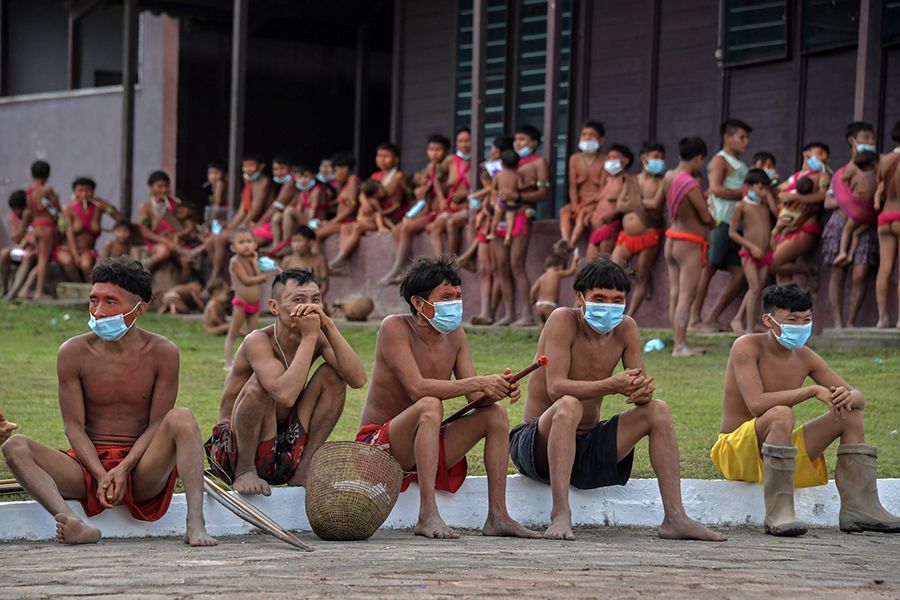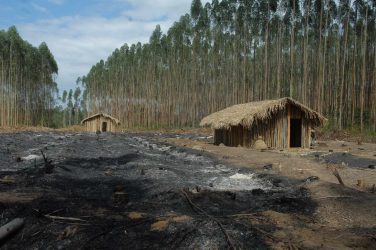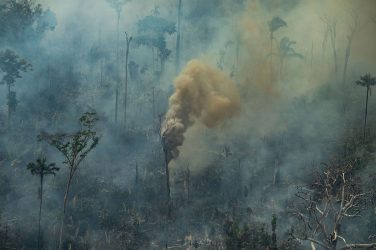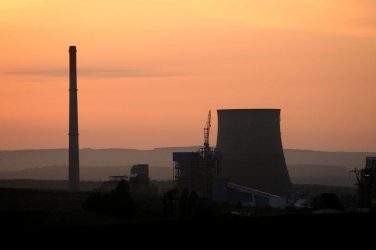Indigenous and environmental organizations in Brazil launched an app aimed at alerting indigenous communities to the spread of the coronavirus pandemic in their lands.
“The application maps and periodically updates the situation regarding the pandemic in cities within a 100 kilometer radius of indigenous lands,” said the Coordination of the Indigenous Organizations of the Brazilian Amazon (COIAB) and the Amazon Environmental Research Institute (IPAM) in a joint statement.
The app, called “Covid-19 Indigenous Alert” aims to help indigenous people identify areas with high infection rates.
Provided free on the Android system, the app uses data from Brazil’s health ministry, people working in the indigenous health system, leaders from indigenous organizations and the COIAB network.
“This collection of information, as well as directing our strategies and actions to combat COVID-19, has exposed the lack of notification from public authorities and the serious way in which the new virus affects us,” said Mario Nicacio Wapichana, the deputy coordinator of COIAB.
With four million cases and over 125,000 deaths amongst its 212 million population, Brazil is the worst affected country in the world by the virus after the United States.
Amongst the 900,000 indigenous people there have been 30,000 infections and 785 deaths, according to The Articulation of Indigenous Peoples of Brazil (APIB.)
“Indigenous peoples are especially vulnerable to the new coronavirus, presenting an incidence rate 249% higher than the national average and a 224% higher mortality, according to analysis of the registered cases up to August 28,” said COIAB.
The network said low levels of immunity, the invasion of indigenous land by outsiders, the introduction of foreign pathogens and a weak health system “are some of the motives behind such alarming numbers.”
Several high-profile indigenous leaders have died of COVID-19.
However, earlier on Friday the 90-year-old iconic chief Raoni Metuktire, one of the most famous defenders of the Amazon rainforest, was released from hospital after a week receiving treatment for –19.
The leader of the Kayapo people, known for his colorful feather headdresses and the large disc inserted in his lower lip, has returned to his territory in Xingu National Park, in the center-west of Brazil.
The app, called “Covid-19 Indigenous Alert” aims to help indigenous people identify areas with high infection rates.
Four Million Cases
Brazil surpassed four million coronavirus cases, as an international panel looking into the global response to the pandemic vowed to uncover how it was able to spread worldwide.
“This is a strong panel poised to ask the hard questions,” said former Liberian president Ellen Johnson Sirleaf, co-chair of the Independent Panel for Pandemic Preparedness and Response (IPPR), which will rake over the heavily criticized World Health Organization-led response.
Meanwhile, Amnesty International said more than 7,000 health care workers have died of the virus worldwide, including more than 1,300 in Mexico alone, the most for any country.
The virus continued to disrupt the world of sport and entertainment, with filming of the new Batman movie halted in Britain because its star Robert Pattinson reportedly tested positive for the disease.
French football team Paris Saint-German said three more of its squad had been infected, a day after Neymar and two teammates were diagnosed, and Argentine football giants Boca Juniors said 18 of its players had tested positive just two weeks before restarting their Copa Libertadores campaign.
There were almost 44,000 new cases over a period of 24 hours alone, and 834 fatalities. However, some experts saw a silver lining in the statistics — Brazil could be on the verge of improvement.
“In the last two months, we have seen a curve that mixes regions that are increasing, with others that are decreasing,” said Paulo Lotufo, professor of epidemiology at the University of São Paulo, pointing to spikes in the south and center-west, while cases were falling in the major cities of São Paulo and Rio de Janeiro, as well as in the north.
But experts warned the situation could suddenly worsen again if local and regional governments give in to pressure from business groups to reopen the economy too soon, and if social distancing measures are abandoned.
Unlike in Europe and Asia, where the virus hit hard and then subsided, Brazil’s outbreak is advancing at a slow but devastating pace, said Christovam Barcellos, a researcher at public health institute Fiocruz.
“Brazil is unique in the world. Since the start of the pandemic, its curve has been different from other countries’, much slower”
“It has stabilized now, but at a very dangerous level: nearly 1,000 deaths and 40,000 cases per day…. And Brazil still isn’t past the peak.”
Brazil confirmed its first case of the virus on February 26, a São Paulo businessman returning from a trip to Italy. It recorded its first death on March 16. The pandemic soon turned political in Latin America’s largest country.
President Jair Bolsonaro condemned the “hysteria” around the virus, and attacked governors and mayors who imposed lockdown measures, arguing the economic damage would be worse than the disease itself.
The far-right leader has instead pushed the drug hydroxychloroquine as the solution to the health crisis, despite studies showing it is ineffective against Covid-19.
He again said recently the controversial medication had “saved thousands of victims’ lives” in Brazil. Bolsonaro even took what he called the “right-wing” drug himself when he was diagnosed with the virus in July.
Experts widely agree the lack of a cohesive message from Brazil’s leaders is responsible for the country’s failure to “flatten the curve.”
“It’s terrible. There’s been a total lack of coordination by the federal government, which unfortunately is another characteristic of the pandemic in Brazil,” said Barcellos.
The virus has meanwhile spread from the first demographic it infected – wealthy travelers returning from abroad – to more vulnerable groups and to the interior of the country.
Impoverished residents of overcrowded favelas, or slums, in cities such as Sao Paulo and Rio de Janeiro have been hit especially hard. So have indigenous groups in the Amazon rainforest, who have a history of vulnerability to outside diseases.
Island Has Protocol for Tourists
Fernando de Noronha, an archipelago 354km off Brazil’s northeastern coast famous for abundant sea life, pristine beaches and dramatic mountainsides rising above the coast, is trying a novel method for fighting the coronavirus.
Only tourists who have already had Covid-19 and recovered will be allowed onto the island chain, according to statements released by local and state governments.
The move by the tourism dependent archipelago, which has about 3,100 permanent residents, according to the most recent census estimate, speaks to the unique ways that state, local and national governments are trying to return to a semblance of normal as new Covid-19 cases and deaths stabilize in many parts of the world.
There is significant debate as to the level and duration of immunity that coronavirus patients develop after a first infection. There have been cases of re-infection reported, including in Brazil. However, such reports are relatively rare.
“There hasn’t been community transmission on the island for a long time. We have to keep it that way,” André Longo, the health secretary of the state of Pernambuco, said in a statement.
“Obviously, this step is going to be done with an eye on safety and reactivating economic activity on the archipelago.”
Fernando de Noronha has so far registered 93 confirmed cases of the virus and no deaths. It prohibited tourism starting in March. For a period from April to June, even residents who were on the mainland were not allowed to return.
Finances Deteriorating
Brazil’s finances continued to deteriorate in July as the COVID-19 crisis pushed the public sector debt and deficit as a share of the economy to new records, official figures showed, although not as bad as economists had feared.
The national debt rose to a record 86.5% of gross domestic product in July and the public sector primary deficit in the month, excluding interest payments, was 81.1 billion reais (US$ 15 billion), the central bank said.
The primary deficit in the 12 months to July rose to 537 billion reais from 459 billion reais in June, the central bank said. As a share of GDP, it widened to 7.5% from 6.4% in June, and just 0.8% pre-coronavirus in February.
In the first seven months of the year, the primary deficit ran at 11.9% of GDP, compared with just 0.2% of GDP in the same period last year.
The latest official government forecast is for a public sector primary deficit of 812 billion reais this year, or 11.3% of GDP. But that does not include the extension of emergency aid payments to the poor announced by President Jair Bolsonaro and expected to be confirmed this week.
Alberto Ramos, head of Latin American research at Goldman Sachs, expects the picture to deteriorate as the recession hammers tax revenues and prompts additional government spending.
“We now expect the consolidated public sector to record a primary fiscal deficit of around 13% of GDP (likely higher) … and gross public debt to close over 95% of GDP,” he wrote on Monday.
In nominal terms, including interest payments, the public sector deficit was 86.9 billion reais in July, the central bank said, also less than the expected 109.9 billion reais.
Mercopress













